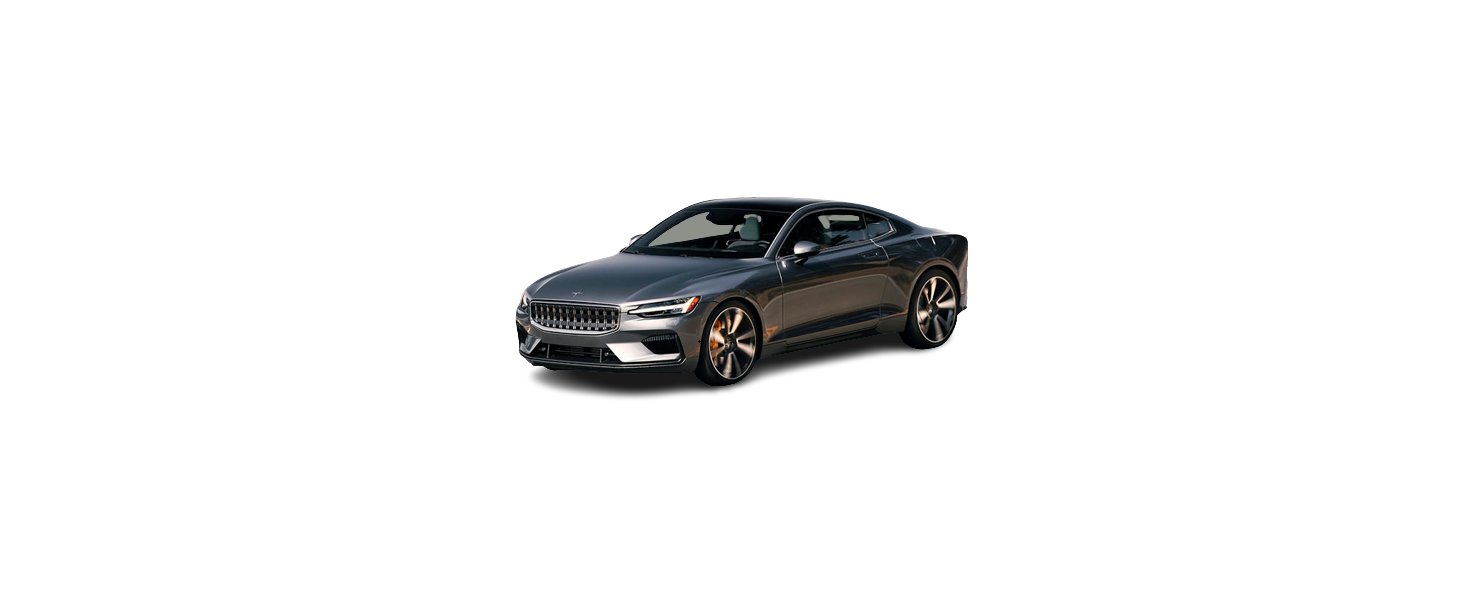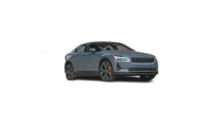2021 Polestar 1 Wheels and tires General topics Owners Manual




2021 Polestar 1 Wheels and tires General topics


Properly loading your vehicle will provide maximum return of vehicle design performance.
Weight designations
Before loading your vehicle, familiarize yourself with the following terms for determining your vehicle’s weight ratings, with or without a trailer, from the vehicle’s Federal/Canadian Motor Vehicle Safety Standards (FMVSS/CMVSS) label, and the vehicle’s tire information placard:
Curb weight
The weight of the vehicle includes a full tank of fuel and all standard equipment. It does not include passengers, cargo, or optional equipment.
Capacity weight
All weight is added to the curb weight, including cargo and optional equipment. When towing, towbar weight is also part of cargo weight.
Permissible axle weight
The maximum allowable weight can be carried by a single axle (front or rear). These numbers are shown on the Federal/Canadian Motor Vehicle Safety Standards (FMVSS/CMVSS) label. The total load on each axle must never exceed it’s maximum permissible weight.
Gross vehicle weight (GVW)
The vehicle’s curb weight + cargo + passengers.
Steps for Determining Correct Load Limit
- Locate the statement “the combined weight of occupants and cargo should never exceed XXX kg or XXX lbs.” on your vehicle’s placard.
- Determine the combined weight of the driver and passengers that will be riding in your vehicle.
- Subtract the combined weight of the driver and passengers from XXX kg or XXX lbs.
- The resulting figure equals the available amount of cargo and luggage load capacity. For example, if the “XXX” amount equals 1400 lbs. and there will be five 150 lb. passengers in your vehicle, the amount of available cargo and luggage load capacity is 650 lbs. (1400 – 750 (5 × 150) = 650 lbs.)
- Determine the combined weight of luggage and cargo being loaded on the vehicle. That weight may not safely exceed the available cargo and luggage load capacity calculated in Step 4.
- If your vehicle will be towing a trailer, the load from your trailer will be transferred to your vehicle. Consult the manual to determine how this reduces the available cargo and luggage load capacity of your vehicle.
WARNING
- Exceeding the permissible axle weight, gross vehicle weight, or any other weight rating limits can cause tire overheating resulting in permanent deformation or catastrophic failure.
- Do not use replacement tires with lower load carrying capacities than the tires that were original equipment on the vehicle because this will lower the vehicle’s GVW rating. Use only tires with the correct load-carrying capacity. Contact Polestar Customer Support for more information.
Tires
The function of the tires is to carry loads, provide traction on road surfaces, reduce vibrations and protect the wheels from wear.
The tires significantly influence the vehicle’s driving characteristics. The type, dimensions, tire pressure, and speed rating have a considerable impact on how the vehicle performs.
Your vehicle is equipped with tires according to the vehicle’s tire information placard on the B-pillar (the structural member at the side of the vehicle, at the rear of the driver’s door opening).
WARNING
The tires have good road holding characteristics and offer good handling on dry and wet surfaces. It should be noted however that the tires have been developed to give these features on snow/ice-free surfaces.
“All-season” tires provide a somewhat higher degree of road-holding on slippery road surfaces than tires without the “all-season” rating. However, for good road holding on icy or snow-covered roads, Polestar recommends snow tires on all four wheels.
When replacing tires, be sure that the new tires are the same size designation, type (radial), and preferably from the same manufacturer, on all four wheels. Otherwise, there is a risk of altering the vehicle’s road-holding and handling characteristics.
Recommended tires
On delivery, the vehicle is equipped with Polestar original tires that have the VOL marking on the side of the tires. These tires have been designed specifically for your vehicle. It is therefore important when replacing tires that the new tires have this same marking to help maintain the vehicle’s driving characteristics, comfort and fuel consumption.
New tires
Tires are perishable goods. After a few years, they will begin to harden and their friction properties will gradually deteriorate. Always replace tires with the freshest tires possible. This is particularly important for snow tires. A series of numbers are imprinted on the sidewall of the tire. The last four digits in the series are the Department of Transportation (DOT) stamp and indicate the week and year the tire was manufactured. The tire in the illustration has 0717 as the last four digits, which means it was manufactured in week 7 of 2017.
Tire age
Tires degrade over time, even when they are not being used. Polestar recommends that tires generally be replaced after 6 years of normal service. The heat caused by hot climates, frequent high loading conditions, or Ultra Violet (U.V.) exposure can accelerate the aging process. Even if a tire has never been used, it should still be replaced every seven years. A tire with e.g., visible cracks or discoloration should be replaced immediately.
Tire economy
- Maintain correct tire pressure.
- Avoid fast starts, hard braking, and tire screeching.
- Tire wear increases with speed.
- Correct wheel alignment (four-wheel alignment) is very important.
- Unbalanced wheels impair tire economy and driving comfort.
- Tires must maintain the same direction of rotation throughout their lifetime.
- The tires on the rear wheels should have as much or more tread depth as the tires on the front wheels in order to reduce the risk of oversteer during hard braking.
- Hitting curbs or potholes can damage the tires and/or wheels permanently.
Tire rotation and tread depth
The vehicle’s original tires cannot be changed from the front to the rear wheel axle or vice versa.
Driving style, tire pressure, climate, and road conditions affect how quickly the tires age and exhibit signs of wear. Maintaining the correct tire pressure helps keep tread wear evenly distributed.
Contact Polestar Customer Support if you need assistance determining the tread depth.
Storing wheels and tires
When storing complete wheels (tires mounted on rims), they should be suspended off the floor or placed on their sides on the floor.
Tires not mounted on rims should be stored on their sides or standing upright, but should not be suspended.
IMPORTANT
- The wheel and tire sizes for your Polestar are specified to meet stringent stability and handling requirements. Unapproved wheel/tire size combinations can negatively affect your vehicle’s stability and handling.
- Any damage caused by the installation of unapproved wheel/tire size combinations will not be covered by your new vehicle warranty. Polestar assumes no responsibility for fatalities, injuries, or expenses that may result from such installations.
Recent Posts
VW Jetta Engine Fuse Box Diagram
Access the comprehensive 2010-2018 VW Jetta Passenger Fuse Box Diagram to troubleshoot electrical issues effectively.…
VW Jetta Passenger Fuse Box Diagram
Explore the comprehensive VW Jetta Passenger Fuse Box Diagram to troubleshoot electrical issues effectively. Understand…
2023 Ford F-150 Lightning Fuse Box Diagram
Under Hood Fuse Box Location Remove the front luggage compartment cover. Under Hood Fuse Box…
2022 Kawasaki NINJA H2 SX SE Brake Lever Adjuster Owner’s Manual
2022 Kawasaki NINJA H2 SX SE Brake Lever Adjuster Owner's Manual NOTICE Only adjust the front…
2023 Land Rover Range Rover Evoque Exiting The Vehicle Owners Manual
2023 Land Rover Range Rover Evoque Exiting The Vehicle SINGLE LOCKING WARNING Before exiting the…
2023 Land Rover Range Rover Evoque Front Seats Owners Manual
2023 Land Rover Range Rover Evoque Front Seats FRONT SEAT SAFETY Make sure to read…


